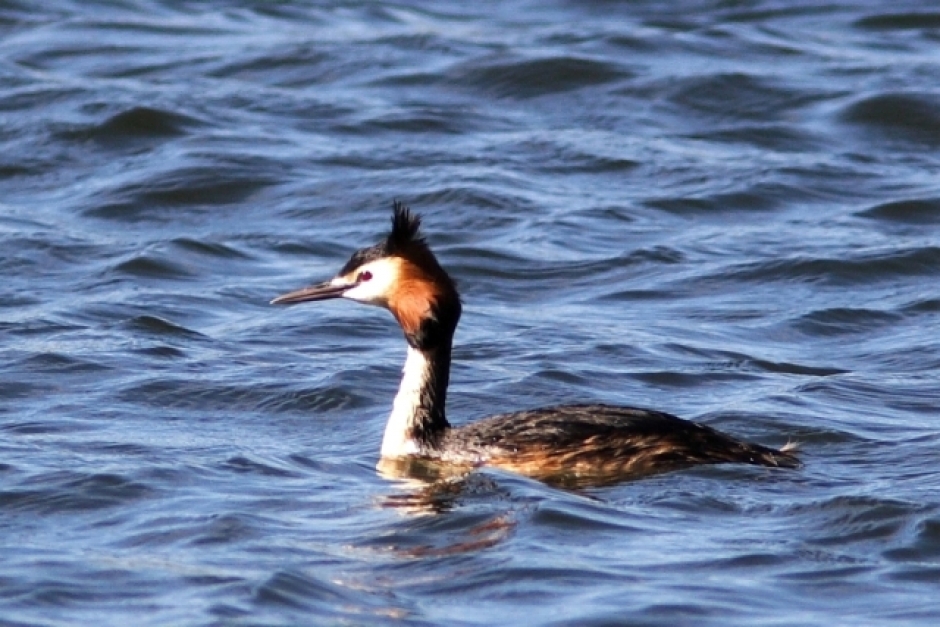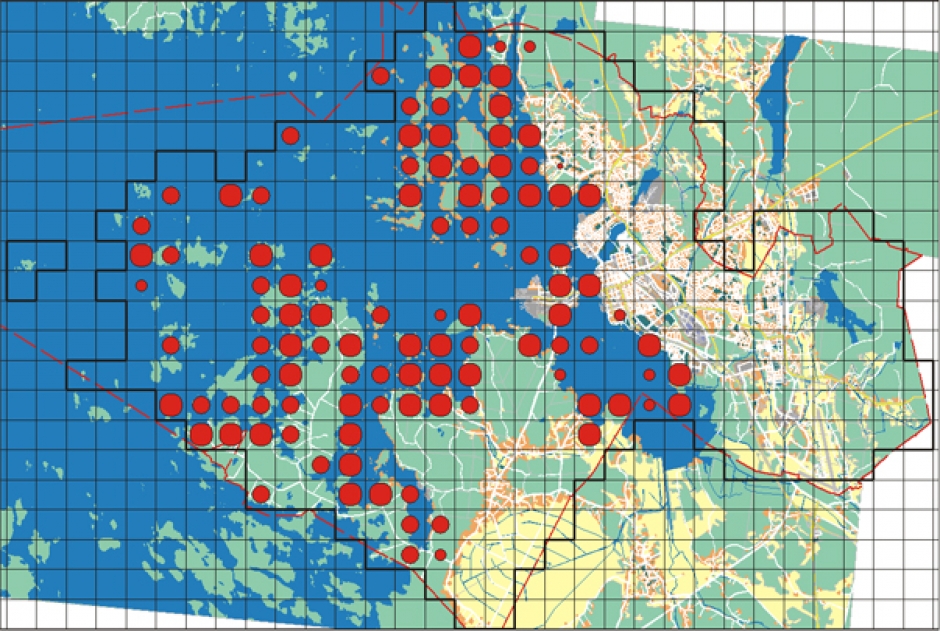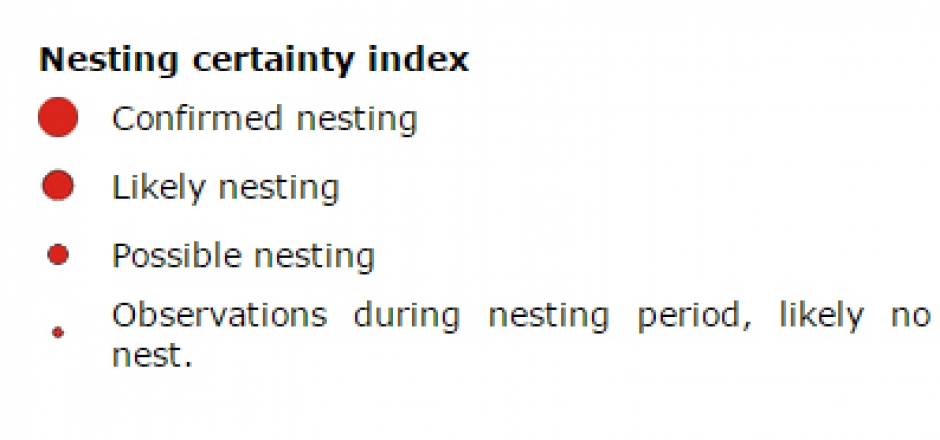Great Crested Grebe
Podiceps cristatus

General information. The great crested grebe is the most common grebe in Finland, where nesting populations have significantly increased over the past few decades. It is a full diving species, catching small fish at the edge of the water in inland lakes and sea bays. Mating during spring involves intricate rituals and behavioral traits, making this species particularly interesting to observe.
- Length about 50 cm
- Nests in reed belts. The nest is usually in the form of a float under cover of vegetation
- Migrates to Western Europe and the Mediterranean for winter
- Feeds primarily on fish
Habitat. The great crested grebe nests in lush inland lakes and sea bays. It is absent from clear, barren lakes. Its nest is built in the form of a float, anchored at the edge of a reed or sedge belt. The great crested grebe lays 3 to 6 eggs in May, which hatch during June to July. During the first few weeks, the young often seek out protection and warmth among the back feathers of the mother.
Distribution in Vaasa. The Sundominlahti-bay and Gerby archipelago form the central axis of the great crested grebe distribution area in Vaasa. Colonies consisting of multiple pairs, as many up to double-digit amounts, may form in optimal habitats. For example, about 60 pairs were found nesting in a small area in the Sundominlahti bay in 2004.


